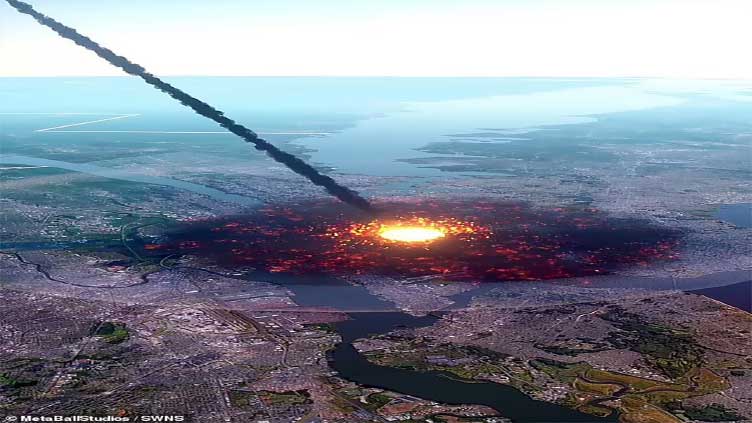Asteroid could hit Earth, warns famed astrophysicist

Technology
Explosion would be 500 times more powerful than the atomic bomb dropped on Hiroshima
(Web Desk) - Famed astrophysicist Neil deGrasse Tyson has issued a grave warning about a 'city-killer' asteroid that has a chance of hitting Earth.
'At the moment, mansion-sized Asteroid 2024-YR4 has a one-in-fifty chance of hitting Earth in the next eight years,' he posted on X, adding: 'Now might be a bad time to reduce spending on Science. Just sayin'.
This 130-to-300-foot-wide space rock currently has a 2.3 percent chance of directly hitting our planet when it approaches on December 22, 2032, according NASA.
That's nearly double the chance the asteroid had when it was first identified as a potential threat in December of last year.
If this space rock were to hit Earth, it would create a blast equivalent to detonating 7.7 megatons of TNT and leave a 3,000-foot-wide crater in the ground, experts say.
That means its explosion would be 500 times more powerful than the atomic bomb dropped on Hiroshima during World War II.
The odds of a direct impact are low. But astronomers will be watching it very closely so that they know if and when it becomes a serious threat as early as possible, giving space agencies ample time to launch a defense mission.
All that monitoring will require a major scientific effort. But the discovery of 2024 YR4 comes at a time when the Trump administration is making deep cuts to research funding.
The National Science Foundation (NSF), an independent government agency which supports non-medical research, froze its approval process for grants and new spending in January 2025 in response to an executive order from President Trump.
The NSF is the largest funder of scientific research in the nation. Earlier this month, the agency was told to prepare to lose half its staff and two-thirds of its funding.
Other federal science agencies are facing layoffs and funding cuts as well.
Many scientists, including astronomers, have expressed serious concerns over what this could mean for scientific progress in the US.
Now that Asteroid 2024 YR4 has a chance of hitting our planet, hindering research efforts could have devastating consequences.
This space rock was first spotted roughly 27 million miles away from Earth by a NASA-funded project.
It immediately shot to the top of NASA's automated Sentry risk list, which ranks known Near Earth Objects (NEOs) on how likely they are to collide with our planet.
'We think — because of the way it reflects light — that it's probably a stony asteroid, a bunch of bits of other things that have slowly coalesced together,' former Canadian astronaut Chris Hadfield said during an appearance on the British radio station LBC News this week.
This probably means it would slam into Earth's surface in one piece rather than breaking up after entering Earth's atmosphere, he explained.
The blast would send fragments of rock shooting outward at more than 10 miles per second, which is faster than the speed of the International Space Station hurtling around the Earth, Hadfield said.
The shockwave radiating out from the impact would wipe out an area the size of a major city, experts say, which is why 2024 YR4 has been designated a 'city-killer.'
Alternatively, 2024 YR4 may enter Earth's atmosphere but explode in mid air in what's known as an 'air burst,' like the Tunguska asteroid did in 1908.
Though this scenario would prevent it from slamming into the surface, it could be just as destructive. The Tunguska asteroid caused the most explosive impact in recorded history when it blew up over Siberia.
The force of the blast was equivalent to detonating 50 million tons of TNT. It flattened an estimated 80 million trees over 830 square miles of forest and reportedly killed three people.
But astronomers still have many questions about 2024 YR4. Answering them will inform how likely it is to hit Earth, and how much damage it could do if it does.
What's really going to help astronomers determine whether 2024 YR4 is a hit or a miss, Hadfield said, is the James Webb Space Telescope (JWST).



